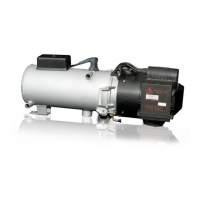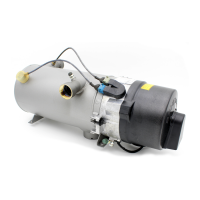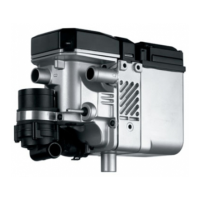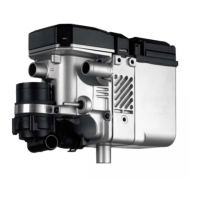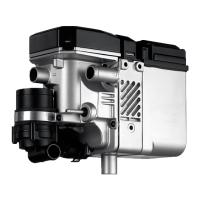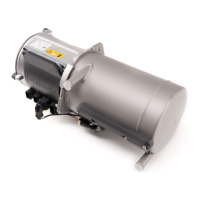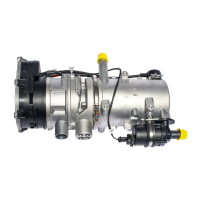DBW 2010 / 2016 Fuel supply
39
7 Fuel supply
The fuel is taken from the vehicle fuel tank or from a separate fuel tank.
7.1. Fuel lines
Fuel lines are to be installed with a gradient wherever possible to pre-
vent air inclusions. Connections within the line are to be secured with
hose clips if no mechanical screw connectors are used.
If fuel hoses are used, the hoses supplied by or available from Webasto
must generally be used. If you do not use these hoses, the fuel hoses
that you do use must comply with DIN 73379. Fuel hoses must not be
kinked or twisted and must be secured with clips
approx. every 25 cm.
Only the normal steel, copper and plastic lines of plasticised, light and
temperature-stabilized PA 11 or PA 12 (e.g. Mecanyl RWTL) pursuant to
DIN 73378 used in the manufacture of motor vehicles may be used for
the fuel lines, together with the appropriate connectors.
The following must be observed for the installation of fuel lines:
– The lines must be protected from the effects of high temperatures.
IMPORTANT!
The external casing on the heater may reach the ignition
temperature of diesel if it is operated without coolant.
– The lines must be protected from stone damage.
– Dripping or evaporating fuel must not be allowed either to
accumulate or to ignition hot parts or electrical equipment
If a shut-off device is installed in the return line, an information sticker as
shown in Figure 10 is to be affixed where it is clearly visible.
IMPORTANT:
Operation with a closed return line will damage the fuel pump.
Fuel may escape. Danger of fire!
Unsupported fuel lines must be secured to prevent them sagging.
Do not install an additional fuel pump.
See pages 29 and 30 for the statutory regulations.
Fig. 10: Information sticker
1303560C_DBW 2010 EA_degbfr.book Page 39 Tuesday, March 5, 2013 9:05 AM
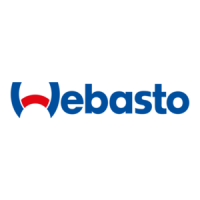
